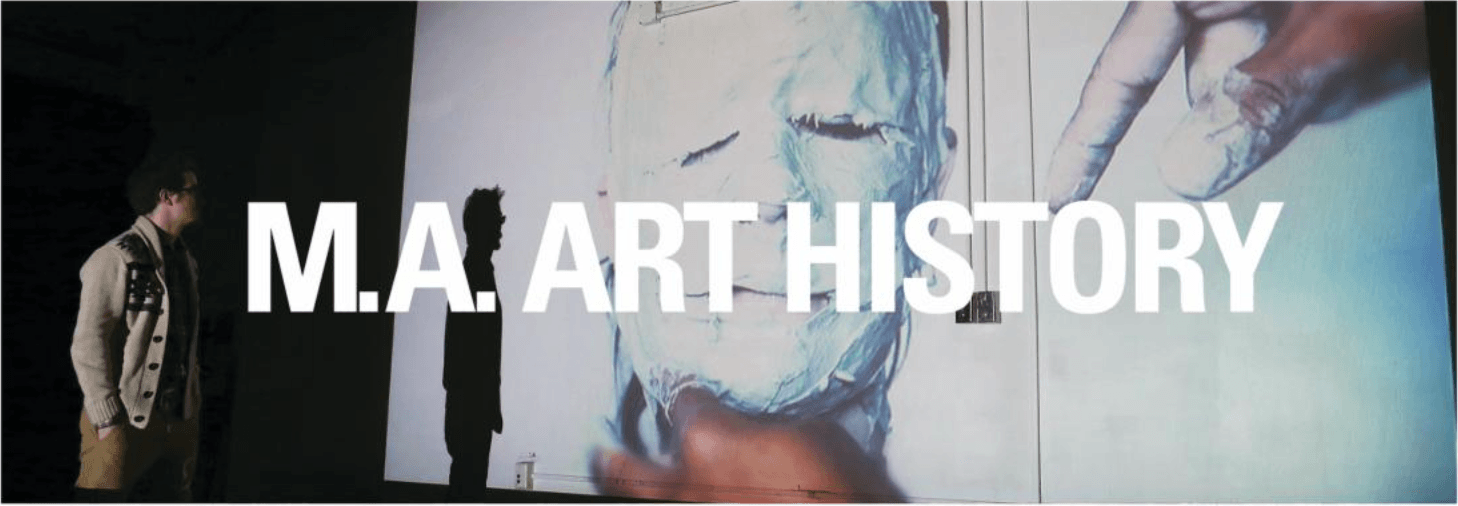Art History
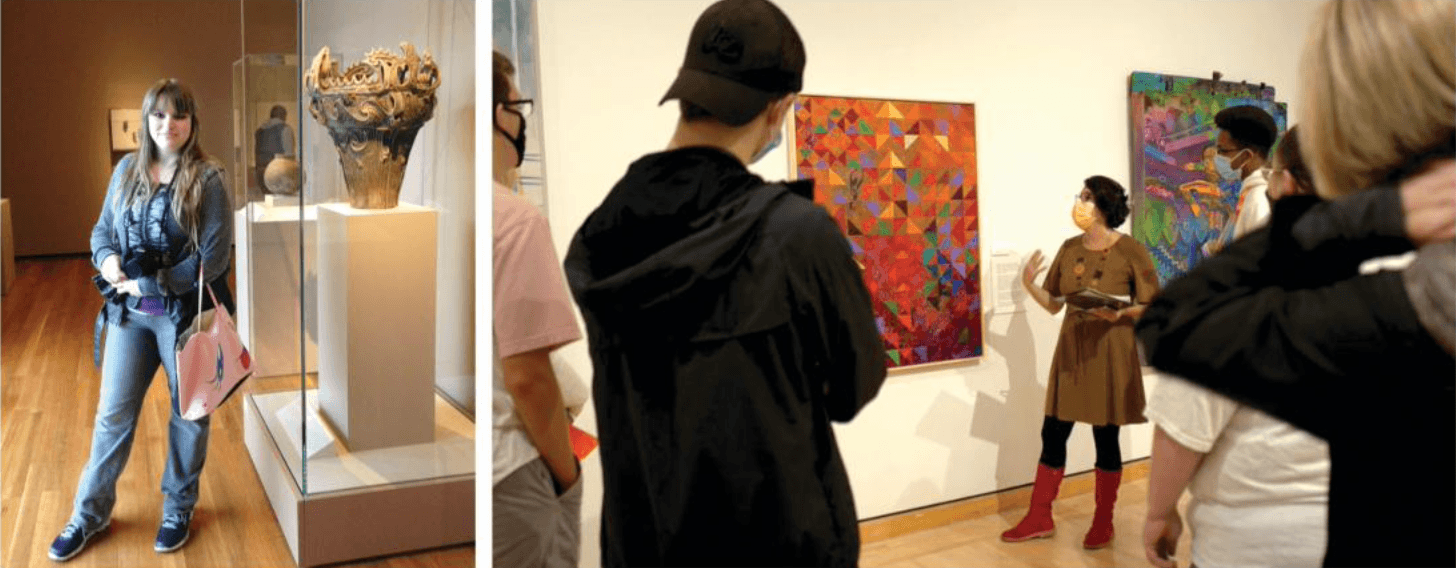
Applications Open until February 14, 2025 at 11:59pm
Apply through our easy two-step process:
1. Submit to the BGSU Graduate School
2. Submit materials to our SlideRoom portal
The Master of Arts in Art History program at BGSU is designed to train students in contemporary methodologies and theories of the history of art and provide an in-depth examination of the social context of art-making and art reception over time. Students are expected to be enrolled full-time, and to commit to attending classes and events offered throughout the day, though enrolling part-time may be possible if course scheduling allows and should be considered in consultation with the Chair.
Faculty expertise in the history of Medieval, Renaissance, Baroque, Modern, and Contemporary Art in Europe, Africa, North America, and the Caribbean provides the foundation for the graduate curriculum. Small seminars and one-on-one faculty-student mentorships guarantee our graduates a personalized BGSU experience that is tailored to their individual interests. This mentorship of students allows for close communication and personal interaction with faculty. The thriving School of Art that houses the Art History program offers constant exposure to both traditional and experimental artistic processes as well as hands-on opportunities for professional experiences in the university galleries, artist studios, and applied art-historical research. Beyond campus, students have liberal access to the art collections of the Toledo Museum of Art as well as a range of arts institutions, which are recognized as leaders in the economy of the Northwest Ohio and Midwest regions. All students accepted into the M.A. program in Art History will be given a shared office within the School of Art and those awarded graduate assistantships will work closely with faculty on research and administrative projects. Graduate students have the opportunity to apply for a number of select grants and fellowships to sustain independent research and travel for their M.A. theses and may also choose to study on one of BGSU’s many education abroad programs.
Students who graduate with a Master of Arts degree in Art History from BGSU are positioned for meaningful careers in educational and arts institutions. While some choose to continue their study of Art History in Ph.D. programs to become university professors or museum curators, others move directly into the job market and have found positions in museums, galleries, arts administration agencies, art auction houses, media outlets, private businesses, consultantships, and more.
In addition to the MA Art History program, we offer several other graduate programs: MFA in Studio, an MA in Art Education, and an MDes in Integrative Design.

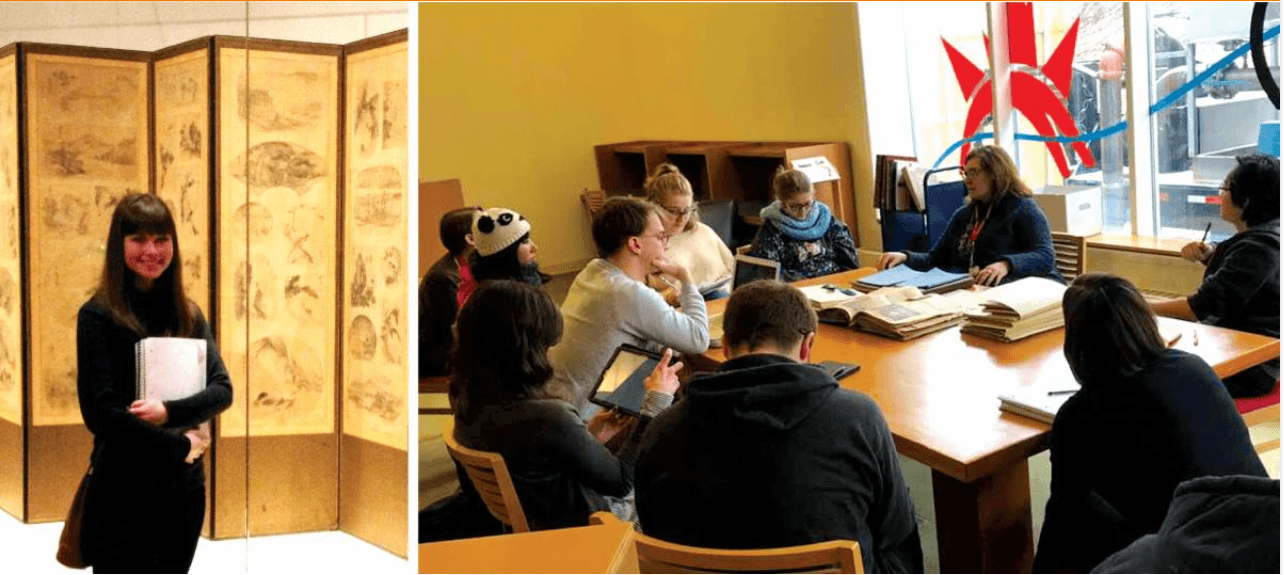
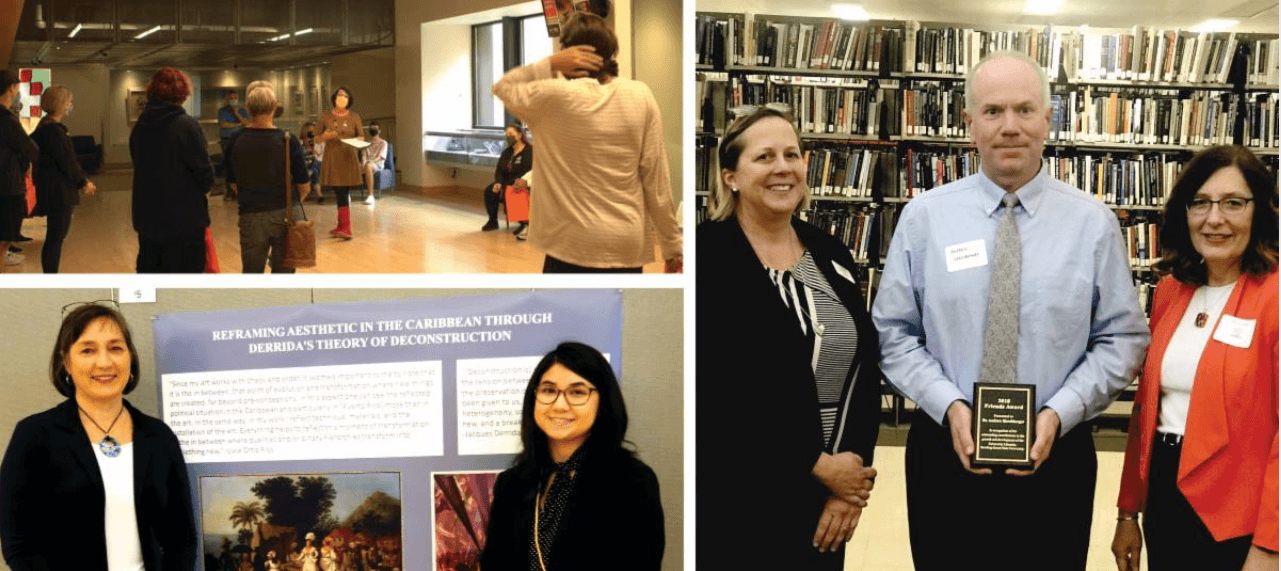
Graduate Faculty in Art History
Graduate students in the M.A. program work closely with all the Art History faculty in the School of Art throughout the two-year program and select one faculty to guide their individual Master-level research as their primary advisor. Students should make their selections based on faculty expertise, which is grounded in chronological, geographical, and theoretical context:
Dr. Allie Terry-Fritsch // Dr. Andrew Hershberger // Dr Rebecca Skinner Green // Dr. Andrea Middleton
In addition to the seminars offered by Art History faculty, graduate students will have the opportunity to take classes from faculty in the College of Arts & Sciences, which features both traditional disciplines (i.e., History, Philosophy, World Languages, English, and others), as well as thematic interdisciplinary programs (i.e., Ethnic Studies, Africana Studies, American Culture Studies, Asian Studies, Popular Culture, Performance Studies, Public History, Women’s Studies). All course enrollments must be done in consultation with the student's Committee Chair or the Chair of Art History if the Committee Chair has not yet been arranged.
The BGSU School of Art
The BGSU School of Art is located on the university’s main campus in Bowling Green, Ohio, and includes five disciplinary programs: Art History, Studio Art, Digital Arts, Graphic Design, and Art Education. Within the School of Art, students will find outstanding faculty members united by a deep commitment to excellence, creativity, and scholarship. In the graduate programs at BGSU, we strive to create a productive and collaborative community of artists, designers, and scholars that creatively addresses contemporary critical issues from a variety of perspectives. Students come to the graduate programs of the BGSU School of Art from all over the United States and the world. Graduates of our programs continue to achieve high levels of professional recognition, both in terms of exhibition and publication successes, and in obtaining college and university teaching jobs, and museum and community arts positions.
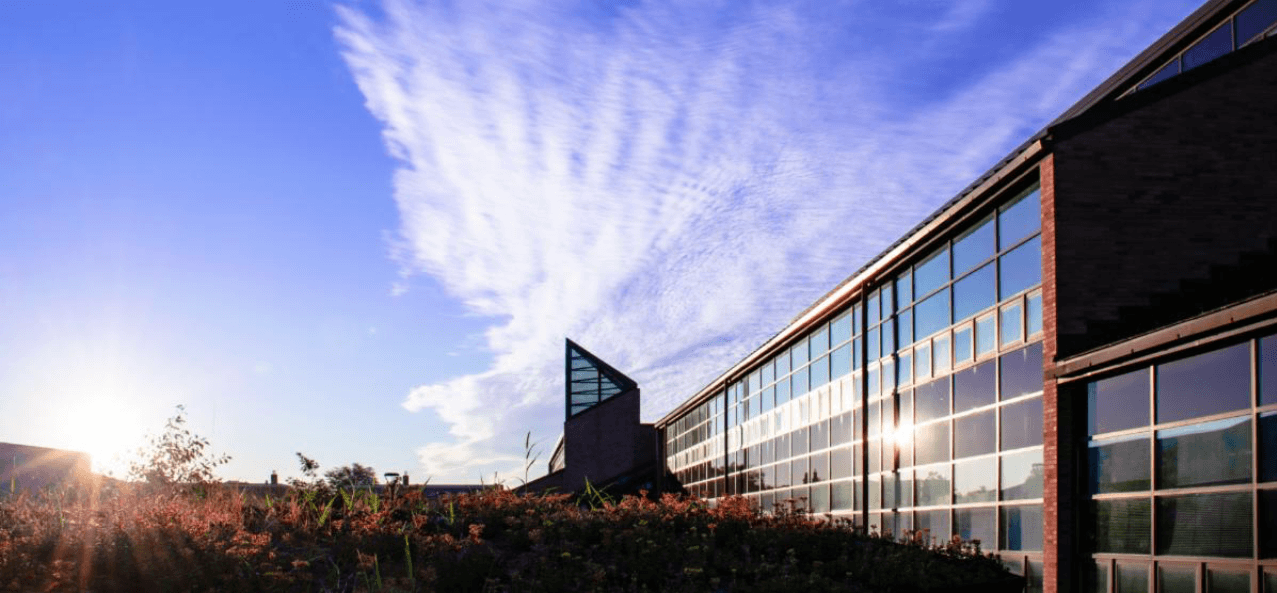
The School of Art Facilities
Art History classes are offered within the School of Art classrooms, which feature smart technology and contemporary furniture design to allow for interactive and dynamic information delivery and student-faculty interaction. All Art History faculty offices are located on the first floor, while the Art History Graduate Lounge is located on the second floor. Resources for Art History students at BGSU include the university’s extensive collection of art history and art theory texts housed within Jerome Library, resources on material culture housed in the Popular Culture Library, as well as the art library located in the nearby Toledo Museum of Art. Through OhioLINK, students have access to library collections across all of Ohio's universities and colleges. Students also have access to the online digital image database ARTstor, as well as databases of digitized art history texts and publications on JStor, and BGSU's subscriptions to art history journals.
One of the unique features of the BGSU Art History program is the immersive art environment of the School of Art, which houses state-of-the-art facilities for the production of art across a stunning range of media. The painting and drawing studios offer natural light, large easels, a stage for life painting, and a separate room for storage. The photography studio houses two darkrooms and a processing room for color and black and white photography as well as a shooting studio with professional lighting. The printmaking studio contains facilities for lithography, woodcut, linoleum, silkscreen, intaglio, and relief as well as a darkroom with enlargers. The ceramics studio contains a variety of gas and wood kilns and has the space for wheel throwing and hand-building. The glass studio contains equipment for working with hot glass and creating stained glass artworks. The jewelry, metal and object design studio are equipped for working with a variety of metals including silver, brass, copper, and gold. There is equipment for casting, enameling, forging, electroforming, and more. The sculpture facility features 12,000 square feet of space with studio lofts complete with a variety of equipment. The School of Art Integrated Shop includes woodworking equipment as well as a CNC machine, laser cutters, 3D printers, and plasma cutters. The School of Art houses three large computer labs with high-end Macintosh and PC computers and a large variety of up-to-date graphic software. The large format digital printing lab, located on the second floor, contains archival inkjet printers so students can get prints of their artwork. The Media Cage has equipment such as digital still and video cameras, tools, sewing machines, tripods, TVs, projectors, etc., for checkout by faculty and students.
QUESTIONS?
Email Chair of Art History, Dr. Rebecca Skinner-Green
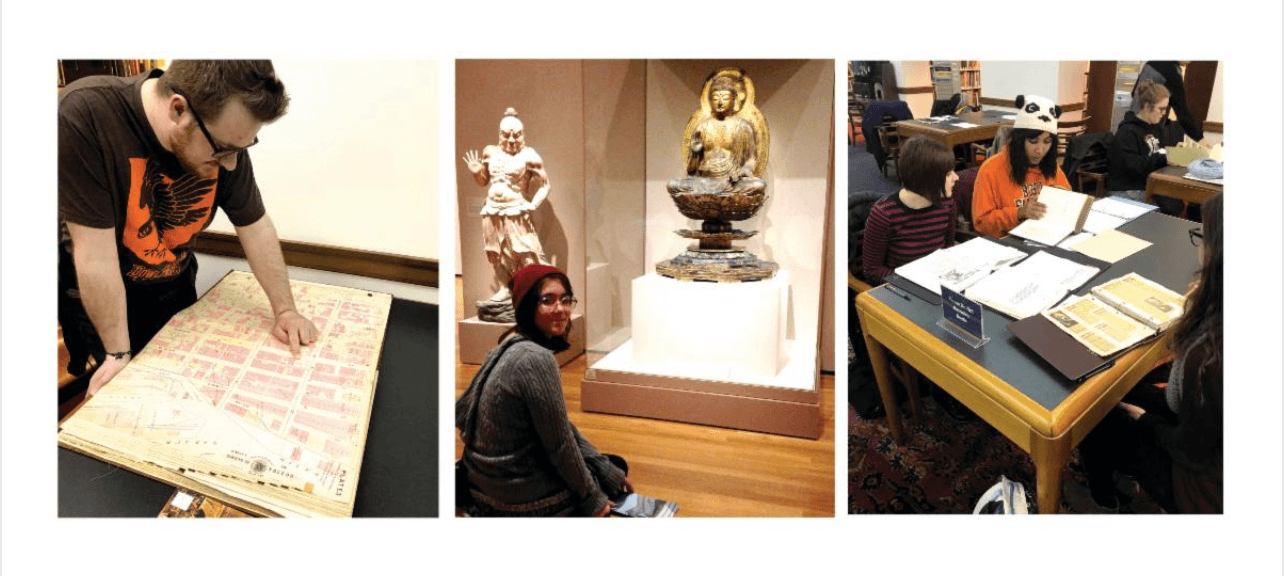
Updated: 09/25/2024 02:44PM

